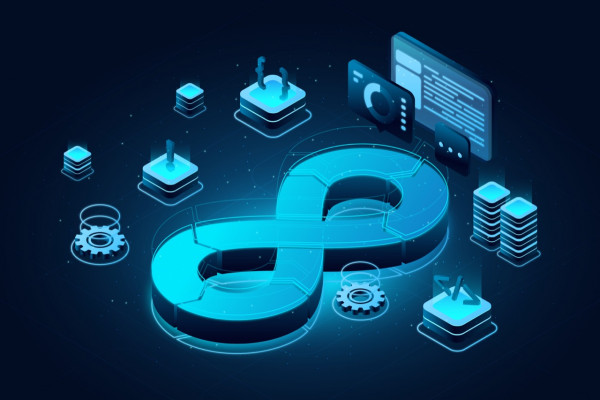Modern networks are densely packed with connected devices, interconnected systems, virtual assets, and mobile components. Monitoring each of these systems demands technology that can discover and map everything on your network.
In this blog, we will speak about how network mapping works and how it will provide you with a complete view of your entire network. Understanding and implementing the best network mapping procedures can ensure successful network monitoring.
What is network mapping?
Network mapping is the process of seeing all entities related to a network. Network mapping is a visual representation of your network and every device connected to it. Network mapping solutions visualize real and virtual networks and provide in-depth visibility into the company’s IT infrastructure. Many Network Performance Monitors (NPMs) include a facility for creating or displaying network maps. These maps display simple images that indicate how the devices on your network are performing.
Organizations utilize network mapping technologies to ease network monitoring and quickly locate network failures. By creating a network map, network mapping assists IT teams in discovering and visualizing network connectivity. This map has network diagrams, device inventories, flowcharts, and topology detection. These visual tools and materials are valuable for several purposes, including maintenance and network security.
How Does Network Mapping Work?
Network mapping solutions employ an active probing mechanism to obtain network data. This approach collects IP addresses and technical information by sending probe packets from node to node. In bigger networks, such probing activities may merely collect general, non-confidential node data in order to provide a more general perspective of network operations. More complex network mapping software, on the other hand, enables tech teams to acquire in-depth insights into the workings of any device on the network simply by clicking on the map. In terms of processing power and storage, such solutions require greater resources.
Network mapping systems often employ the simple network management protocol (SNMP) to discover and map network objects automatically. SNMP operates by exposing technical data on managed systems as variables. These variables are arranged in a Management Information Base (MIB), which describes the system’s setup and status. These variables can be accessed and modified remotely by management apps.
Network mapping solutions employ SNMP to determine the kind of device and collect associated information from all entities on a network. This data is then automatically used to build an object in the map diagram.
On the surface, network mapping works because every network is a gigantic data store just waiting to be tapped. Network mapping tools use MIB via SNMP to acquire details from open standards as well as information specific to the device and vendor. This provides IT professionals with advanced device information such as the number of active ports, power drain, and even temperature.
Importance of Network Mapping for Network Performance
- Displays the whole network
Viewing the complete network and related information is as simple as exploring an actual internet map with a network map. Using network mapping software, every device connected to the network is displayed in an easy-to-understand graphical representation. Real-time visualization of the entire network and all linked devices allows you to detect minor faults before they become threats or major problems. - Enables fast identification of network problems
A network mapping tool can assist your IT team in rapidly pinpointing the devices showing difficulties, allowing them to locate and resolve the main cause swiftly. A real-time network map distinguishes between rapid and accurate resolution of network problems and hours of tinkering and guesswork. - Allows for easy device monitoring
Network mapping solutions efficiently handle this issue by providing the IT team with the location of origin for specific network problems, such as latency. In addition, network mapping simplifies device monitoring by constantly obtaining and interpreting data and changing representations to reflect the obtained information. - Facilitates better planning and forecasting
A graphical representation of your network allows you to identify enterprise infrastructure that needs improvement. By thoroughly examining all devices and their links, network mapping tools indicate potential bottlenecks and chokepoints. Their findings are then reported using a convenient visual representation that is updated in real-time. - Enhances network control and security
Network maps are a powerful security tool that allows network administrators to understand how several devices interact with one another and utilize this knowledge to identify suspicious nodes and links. Network maps’ live feedback provides an overview of all linked wired and wireless devices at any one time.
How to Map a Network Drive: Best Practices
Outlined below are mappings of network best practices for setting up a network drive for a Windows platform in 2022:
- Mapping a network drive using group policy
Since its introduction in Windows Server 2008, IT teams have quickly adopted group policy for more easily mapping network drives. Using group policy to map drives eliminates the need for scripting. It can help speed up user access. - Mapping a network drive for an entire department
Assume you wish to map a network drive for a whole department. Begin by mapping the drive for employees in the same vertical using item-level targeting. A security group can be used to select a certain group of users, thus mapping the network drive to allow only the indicated department to access it. - Mapping a network drive for individual users
To map a network drive for individual users, either a new GPO or an addition to an existing GPO can be created. A folder matching the username of the employee must be set up to finish this process. After that, change the NTFS permissions of the folder to allow just the specific user to access and modify the network drive.
Conclusion
Network topology mapping gives you great visibility into your network and the relationships between your network devices. This access can be highly beneficial for everything from troubleshooting to network security.
A powerful network topology mapper offers network managers the tools they need to map networks at any scale, from the tiniest business to the largest organization. It also enables you to chart a specific packet pathway to aid with traffic bottlenecks and service provider status. Using a network topology mapper, administrators can quickly view a device’s status and its logical connections.
In brief, if you want a topology map that can provide you with the insights you need to improve your network’s performance, you should utilize a network topology mapper.
FAQs
1. What are the 3 techniques for producing a Network Map?SNMP-based active probing, approaches, and route analytics are three techniques for creating a network map.
SNMP-Based Maps: These get their data from the router and switch Management Information Bases (MIBs), which are the network’s hierarchical virtual databases (or other entities).
Active probing: These maps are built using information from a series of “traceroute-like probe packets,” which are unique data packets or frames that report IP routers and switch forwarding pathways to the target address. Network maps are created and used to find “peering links” between ISPs (Internet Service Providers) by compiling this data, which describes the actual forwarding path that the data takes through networks; these are links (physical lines or channels) that connect distinct networks comprising the Internet, allowing ISPs to exchange that traffic from customers for mutual benefit.
Route Analytics: This approach creates a network map by passively listening to layer-3 protocol exchanges between routers and using routing protocol data. This data supports network discovery, real-time network monitoring, routing diagnostics, and network mapping.
2. What should a network map include?Ideally, your map should be thorough and all-encompassing. You want to provide as much information as possible, as long as it doesn’t get too complicated. Here are some suggestions for devices to record and guidelines on how to document them correctly.
- PCs
The majority of your network’s clients will most likely be personal computers. - Printers
Printers are an integral aspect of any network map. - VoIP Phones
Generally, users have just as many VoIP devices on their network as computers. As networks transition from PBX phone systems to IP phones, these devices must be included in network maps. - Networking Hardware
Because how these devices’ function is crucial to how your network performs, having these items mapped can help speed up resolution times when network difficulties occur.
Sometimes, individual users require a mapped disc to save files and access them from other systems. To map a network drive for individual users, either a new GPO or an addition to an existing GPO can be created. A folder with the employee’s username must be made to finish this process. After that, change the NTFS permissions of the folder to allow just the specific user to access and modify the network drive. The majority of the procedure is comparable to mapping a network drive for an entire department, as previously described. However, specific fields will have to be updated if the network disc is being mapped for an individual user.



